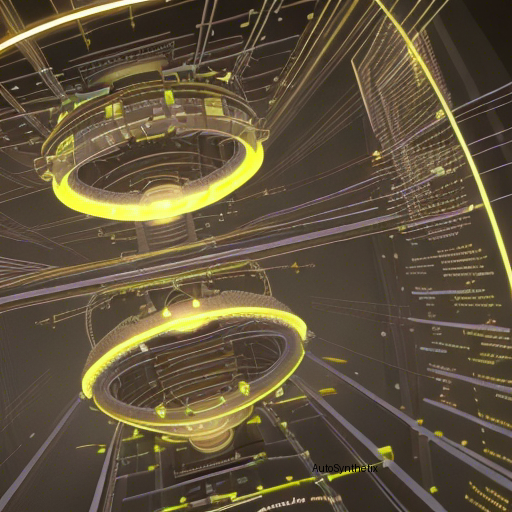Introduction
In today's rapidly evolving artificial intelligence landscape, breakthrough discoveries often reshape how we perceive the possibilities within various subfields. One such innovation comes from a groundbreaking study published by researchers underlining a new era for generative models through their conceptualization – the "Simplified Diffusion Schrödinger Bridge." As a fusion between two powerful concepts, this development could revolutionize the way we harness the power of score-based generative models moving forward. In this article, we will explore what makes this advancement unique, its potential impact, and why you shouldn't overlook the implications hidden behind this scientific revelation.
The Proposed Solution - A Marriage Between Two Powerful Concepts
To fully appreciate the ingenuity encased within the Simplified Diffusion Schrödinger Bridge, one must first understand the foundational theories upon which these ideas rest. On one hand lies the 'Score-Based Generative Models' (SBMs). These cutting-edge techniques have taken center stage due to their remarkable ability to generate high-quality images without the need for Markov Chain Monte Carlo sampling or GAN discriminators. They achieve this feat via iteratively optimizing scores calculated over noisy observations until they converge towards the original sample distribution.
On the other side stands the 'Diffusion Process,' particularly the 'Diffusion Schrödinger Bridges.' While traditionally employed in mathematical finance contexts, recent years witnessed attempts integrating them into machine learning scenarios. However, implementing diffusion processes directly has proven challenging when handling intricate datasets owing largely to computational complexity constraints.
Combining these potent mechanisms, the proposed research outlines a theoretically refined version of the DSB termed the 'Simplified Diffusion Schrödinger Bridge'. Its primary goal? To address existing shortfalls associated with conventional approaches while simultaneously leveraging strengths inherent in both methodologies leading to improved efficiency during model training stages.
Reparameterization Techniques Enabling Practical Advancements
Although rooted deeply in theory, practical considerations remain crucial elements shaping real-world applications. Recognising this necessity led the team behind SD-DSB to introduce an innovative reparameterisation technique designed specifically for neural networks. Despite being theoretically approximate solutions, empirical evidence suggests substantial improvements in network fitting capacities resulting from incorporating said adjustments. Essentially, marrying rigorous academic insights with pragmatic implementation strategies further solidifies the merits offered by the Simplified Diffusion Schrödinger Bridge design.
Experimental Verifications Supporting Significant Improvement Claims
No revolutionary idea can stand firm solely based on conjecture; thus, comprehensive testing forms a cornerstone element validating any major proposal's legitimacy. Extensive experimentation conducted alongside this publication provides robust backing showcasing clear advantages arising from adopting the Simplified Diffusion Schrödinger Bridge paradigm compared against traditional methods. With promising outcomes evident even amidst highly nuanced dataset challenges previously deemed difficult to handle using standard procedures, enthusiasm surrounding this discovery remains palpable among those invested in advancing stateof-theart generative modelling technologies.
Conclusion - Paving Pathways Towards Advanced Generative Modeling Horizons
As technology continues relentlessly pushing boundaries, innovations like the Simplified Diffusion Schrödinger Bridge serve not just as stepping stones but entire bridges connecting present understanding gaps toward future mastery. Hinging upon a symbiosis born from intertwining two successful strands—Score-based Generative Models & Diffusion Processes—this fresh perspective offers profound implications across numerous fields where synthetic data generation plays critical roles, including medical imagery analysis, climate change simulations, historical document reconstruction efforts...and countless others yet undreamt-of. Embracing curiosity borne out of intellectual pursuits, let us eagerly await similar leaps propelled forthwith! \end{}
Source arXiv: http://arxiv.org/abs/2403.14623v1
